Chapter 2. Minerals
Overview of Minerals
Adapted by Lyndsay R. Hauber & Joyce M. McBeth (2018) University of Saskatchewan from Deline B, Harris R & Tefend K. (2015) “Laboratory Manual for Introductory Geology”. First Edition. Chapter 7 “Minerals” by Randa Harris, CC BY-SA 4.0. View source. Last edited: 8 Jan 2020
2.2 PHYSICAL PROPERTIES
Identifying a mineral is a little like playing detective. Minerals are identified by their physical properties. How would you describe the mineral in Figure 2.2? You may say that it is shiny, gold, and has a particular shape. Each of these descriptions is a physical property (shiny is lustre, gold is colour, shape is crystal form). Physical properties can vary within the same minerals, so caution should be applied when identifying minerals. For example, colour is a property that is not a very realistic diagnostic tool in many cases, as some minerals, such as Quartz, can come in a variety of colours (e.g. Figure 2.3). Occasionally, colour can be helpful, as in the case of olivine, which is said to be “olive green”, a light to dark green (e.g. Figure 2.4). We will cover each of the physical properties in detail to help you identify the minerals.
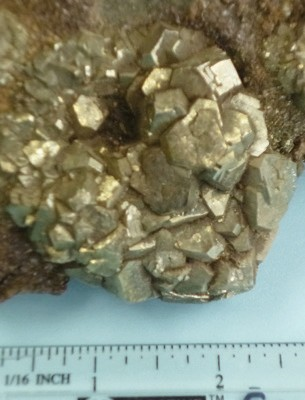
Source: Randa Harris (2015) CC BY-SA 3.0 view source

Source: Randa Harris (2017) CC BY-SA 3.0 view source
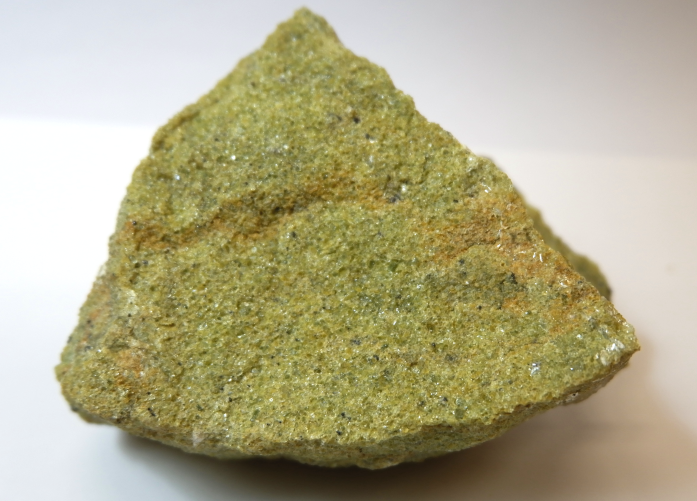
Source: Joyce M. McBeth (2018) CC BY 4.0 view source
2.2.1 Hardness
Hardness refers to the resistance of a mineral to being scratched by a different mineral or other material and is a product of the strength of the bonds between the atoms of a mineral. Whatever substance does the scratching is harder; the item scratched is softer. Hardness is based off a scale of 1 to 10 created by a mineralogist named Friedrich Mohs (e.g. Figure 2.5). Mohs’ scale lists ten minerals in order of relative hardness. Each mineral on the scale can scratch a mineral of lower number. Your mineral kit comes with several items of a known hardness. The glass plate has a hardness of 5.5, the iron nail has a hardness of 4 , the copper coin has a hardness of 3, and your fingernail has a hardness of 2.5. If you can scratch a mineral, then it would be softer than your fingernail, so therefore its hardness would be <2.5. When trying to scratch a surface, use force, but be cautious with the glass plate. ALWAYS lay the glass plate on a flat surface rather than holding it in your hand in case it breaks. Do not confuse mineral powder with a scratch – use your finger to feel for a groove created by a scratch (mineral powder is left behind when a soft mineral scratches a harder surface). Materials of similar hardness have difficulty scratching each other, so that, for example, your fingernail may not be able to always scratch biotite, which has a hardness of 2.5.
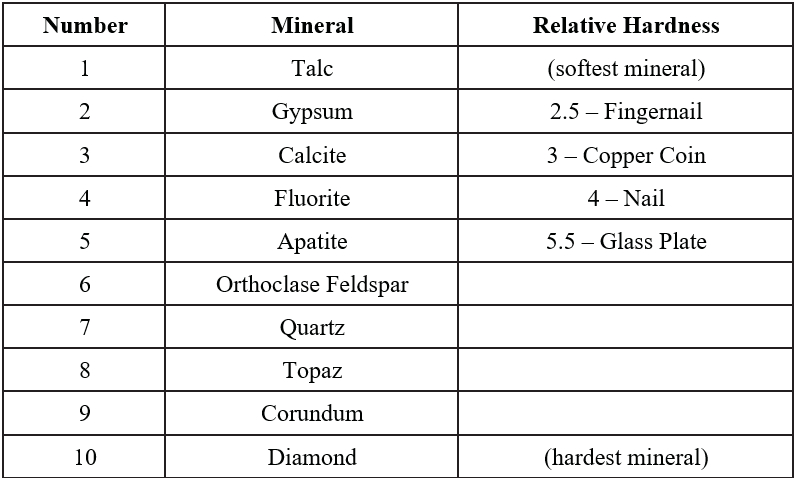
Source: Randa Harris (2015) CC BY-SA 3.0 view source
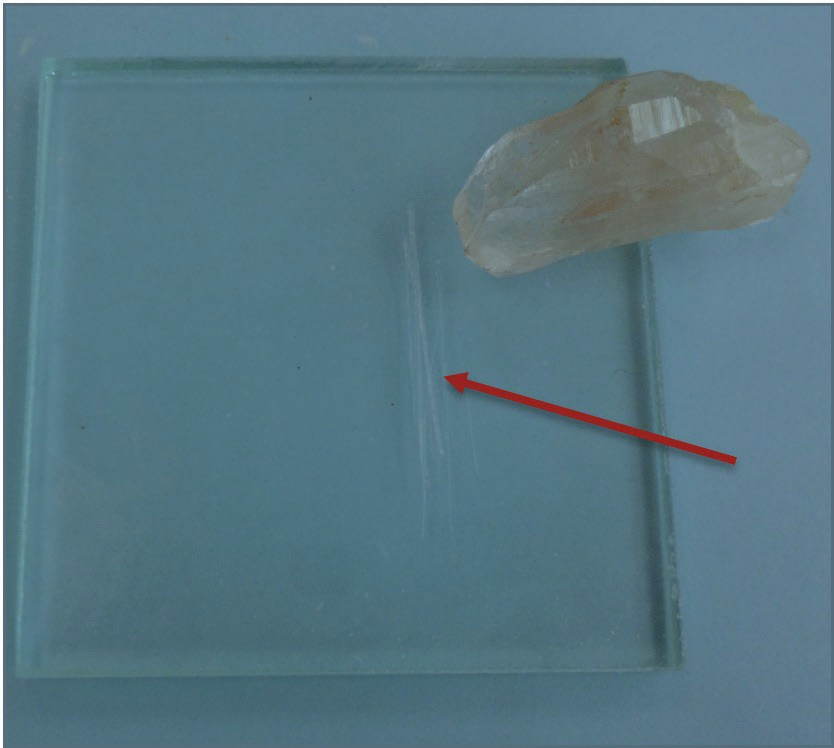
Source: Randa Harris (2015) CC BY-SA 3.0 view source
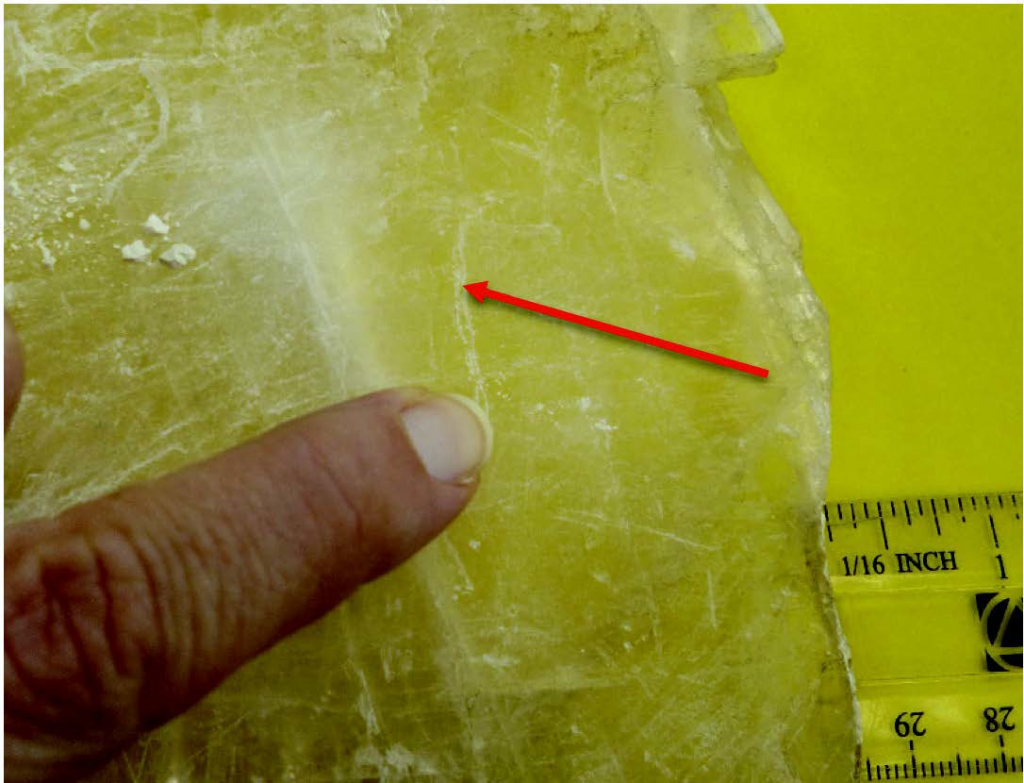
Source: Randa Harris (2015) CC BY-SA 3.0 view source
2.2.2 Crystal Form
This property refers to the geometric shape that a crystal naturally grows into, and is a reflection of the orderly internal arrangement of atoms within the mineral. If minerals have space to grow when they are developing, they will display their crystal form. These ideal growth conditions do not always occur, however, so many minerals do not display their ideal crystal form due to crowded conditions during growth. Examples of crystal form are shown in Figure 2.8.
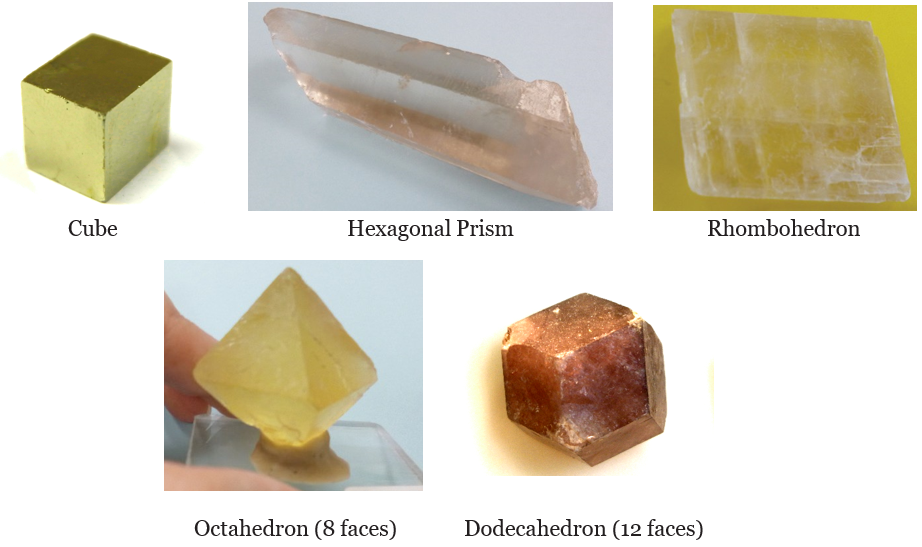
Source: Lyndsay Hauber & Joyce M. McBeth (2018) CC BY 4.0, after Randa Harris (2015) CC BY-SA 3.0 view source
2.2.3 Cleavage
As minerals are broken, some may cleave, or break, along smooth flat planes known as cleavage. These flat surfaces are parallel to directions of weakness within the crystal. All the bonds among the atoms within a mineral may not be of the same strength, so that when a mineral is broken, it breaks along these zones of weakness. This results in flat cleavage planes. Minerals with perfect cleavage break along a smooth, flat plane, while those with poor cleavage break in a more irregular fashion. Some minerals do not contain zones of weakness either because all of the bonds are the same strength or the weaker bonds are not aligned within a plane. If this is the case it will not have cleavage; instead, it will fracture, similar to the curved fracture of glass when you get crack in a windshield.
Be careful not to confuse cleavage with crystal form. Crystal form occurs as a mineral grows (e.g., cubes of pyrite), while cleavage only forms as a mineral breaks. See Figure 2.9 for the main types of cleavage and an example of each.
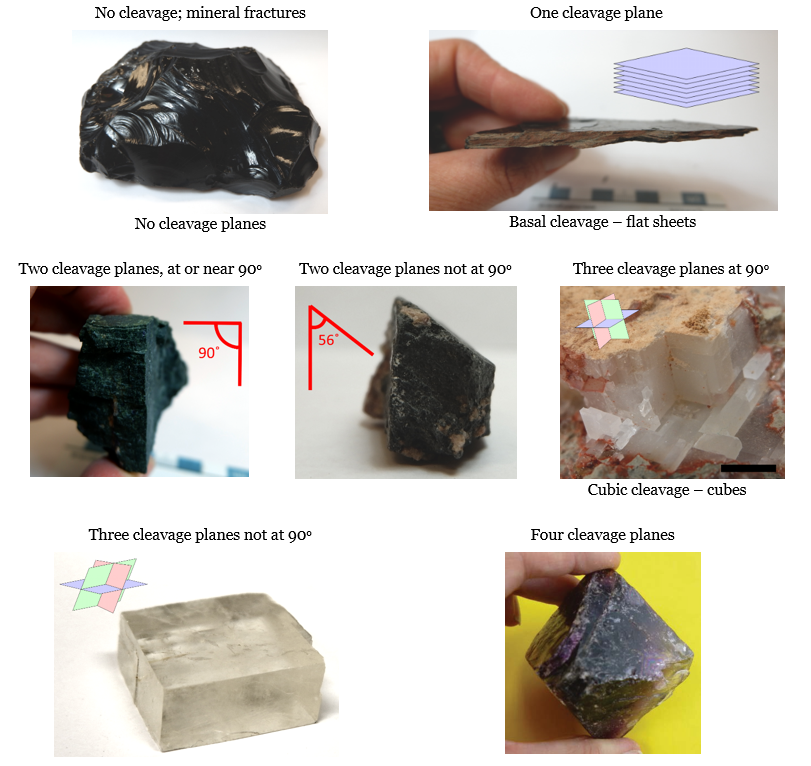
Source: Lyndsay Hauber & Joyce M. McBeth (2018) CC BY 4.0, after Randa Harris (2015) CC BY-SA 3.0 view source
A mineral may have one or more cleavage planes. Planes that are parallel are considered the same direction of cleavage and should only count as one. One direction of cleavage is termed basal cleavage. Minerals that display this cleavage will break off in flat sheets. Two directions of cleavage is termed prismatic, while three directions of cleavage at 90o is referred to as cubic. A mineral with four directions of cleavage is termed octahedral. With 2 or more cleavage planes present, it is important to pay attention to the angle of the cleavage planes. To determine the angle of cleavage, look at the intersection of cleavage planes. Commonly, cleavage planes will intersect at 60o, 90o (right angles), or 120o. Be cautions when you see a flat surface on a mineral – not every flat surface is a cleavage plane. Crystal faces can be flat, but remember they form as a mineral grows, while cleavage forms as a mineral breaks. The crystal form of quartz is a hexagonal prism, with nice flat sides. But when quartz is hit with a rock hammer, it breaks in an irregular fashion and does not exhibit cleavage. Also use caution when trying to distinguish the minerals pyroxene and amphibole. Both minerals are black or greenish-black, with similar hardness, making them difficult to tell apart. You must observe the cleavage angles to tell them apart. Cleavage angles in pyroxene are near 90o, so expect it to look boxy and form right angles, while cleavage angles in amphibole are 60o and 120o, so expect a more bladed or pyramid like appearance (e.g. Figure 2.10).
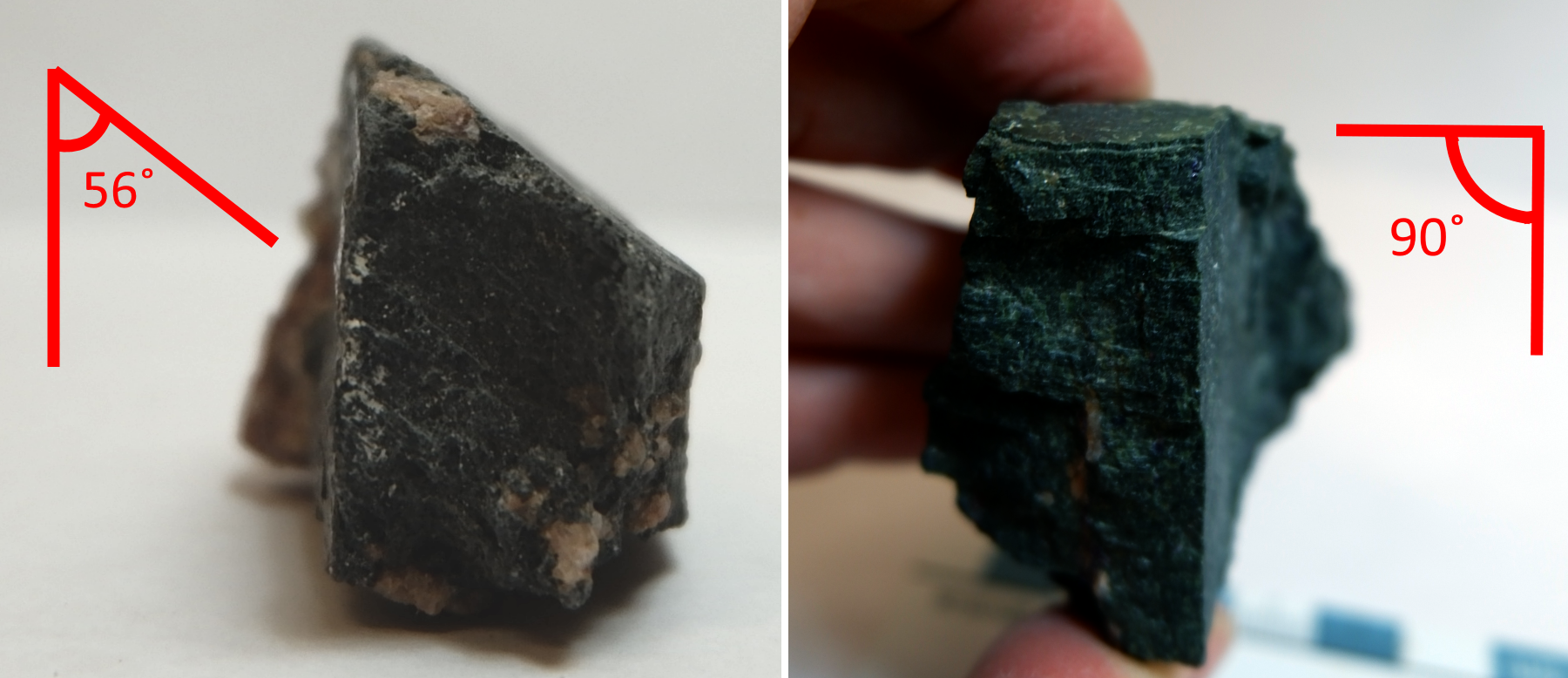
Source: Joyce M. McBeth (2018) CC BY 4.0, after Randa Harris (2015) CC BY-SA 3.0 view source
2.2.4 Fracture
When minerals do not break along cleavage planes, but rather break irregularly, they are said to fracture. Commonly fracture surfaces are either uneven or conchoidal, a ribbed, smoothly curved surface similar to broken glass (e.g. Figure 2.11).
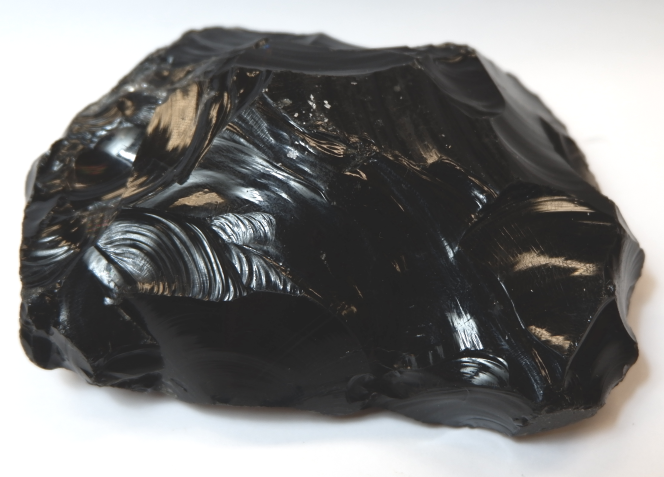
Source: Joyce M. McBeth (2018) CC BY 4.0 view source
2.2.5 Lustre
Lustre refers to the appearance of the reflection of light from a mineral’s surface. It is generally broken into two main types: metallic and non-metallic. Minerals with a metallic lustre have the colour of a metal, like silver, gold, copper, or brass (e.g. Figure 2.12). While minerals with a metallic lustre are often shiny, not all shiny minerals are metallic. Make sure you look for the colour of a metal, rather than for just a shine. Minerals with non-metallic lustre do not appear like metals. They may be vitreous or glassy (e.g. Figure 2.13A), earthy or dull (e.g. Figure 2.13B), waxy (e.g. Figure 2.13C), greasy or oily, etc.
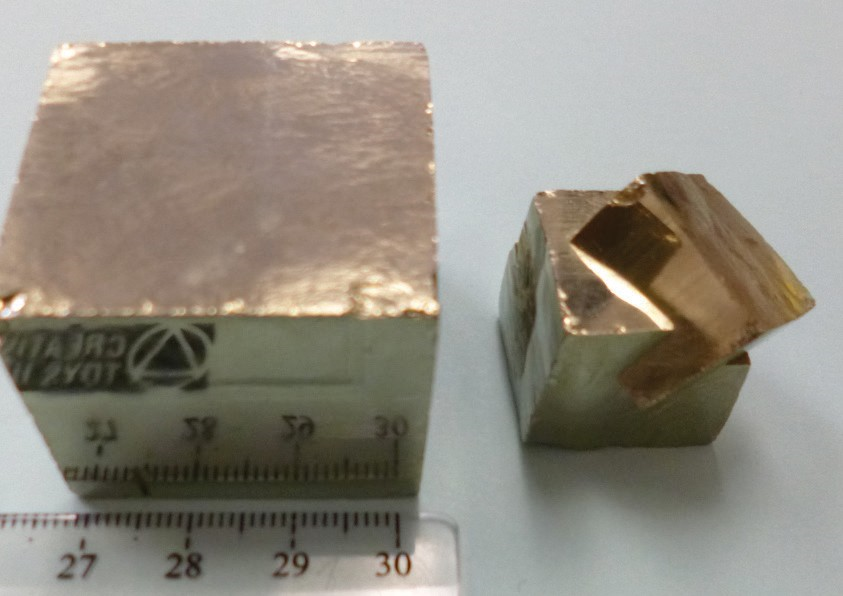
Source: Randa Harris (2015) CC BY-SA 3.0 view source
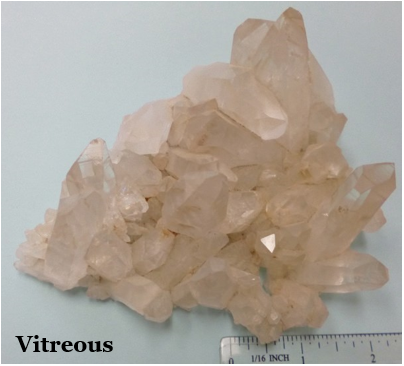
Source: Randa Harris (2015) CC BY-SA 3.0 view source
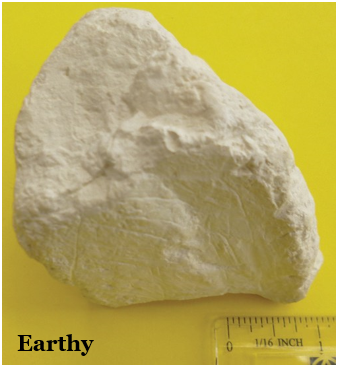
Source: Randa Harris (2015) CC BY-SA 3.0 view source
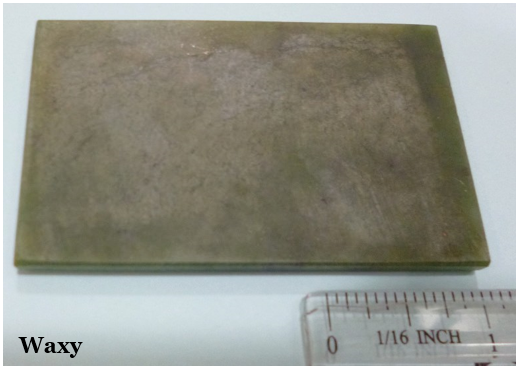
Source: Randa Harris (2015) CC BY-SA 3.0 view source
2.2.6 Streak
Streak is an easily detectable physical property. It refers to the colour left behind on an unglazed piece of porcelain when a mineral is rubbed along its surface. A streak plate is included in your rock and mineral kit to test this property. Often a mineral will have a streak of a different colour than the colour of the mineral (e.g. pyrite has a dark grey streak, Figure 2.14). Some minerals will have a white streak, which is difficult to see along the white streak plate. If you rub a mineral along the streak plate and do not see an obvious streak, wipe your finger along the streak plate. A mineral with a white streak will leave a white powder behind that will rub on your finger (e.g. Figure 2.15).
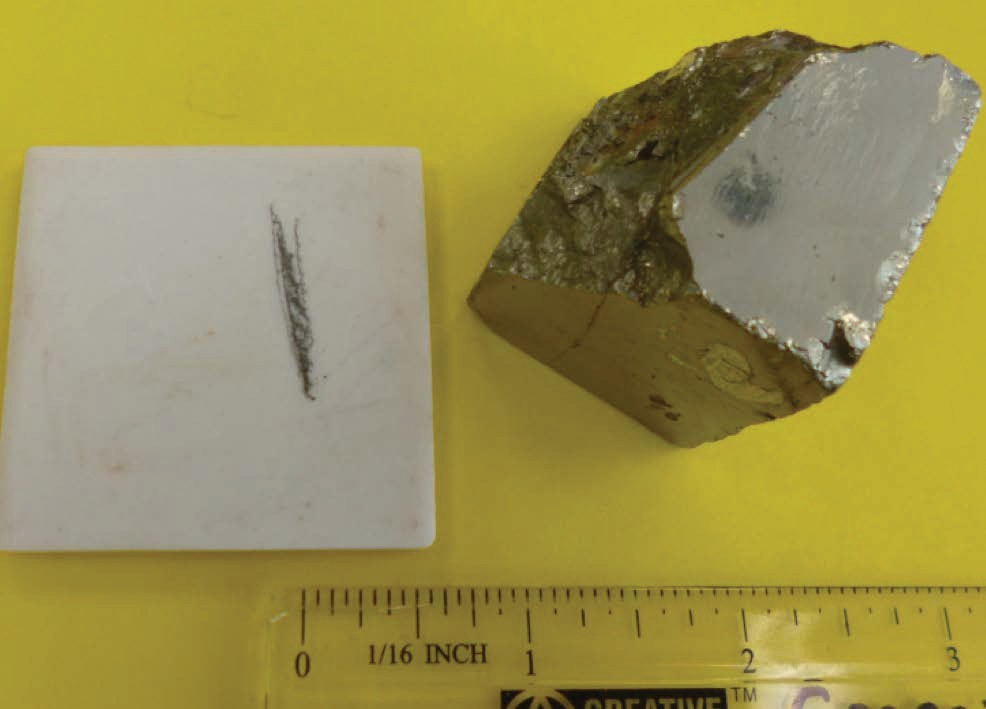
Source: Randa Harris (2015) CC BY-SA 3.0 view source
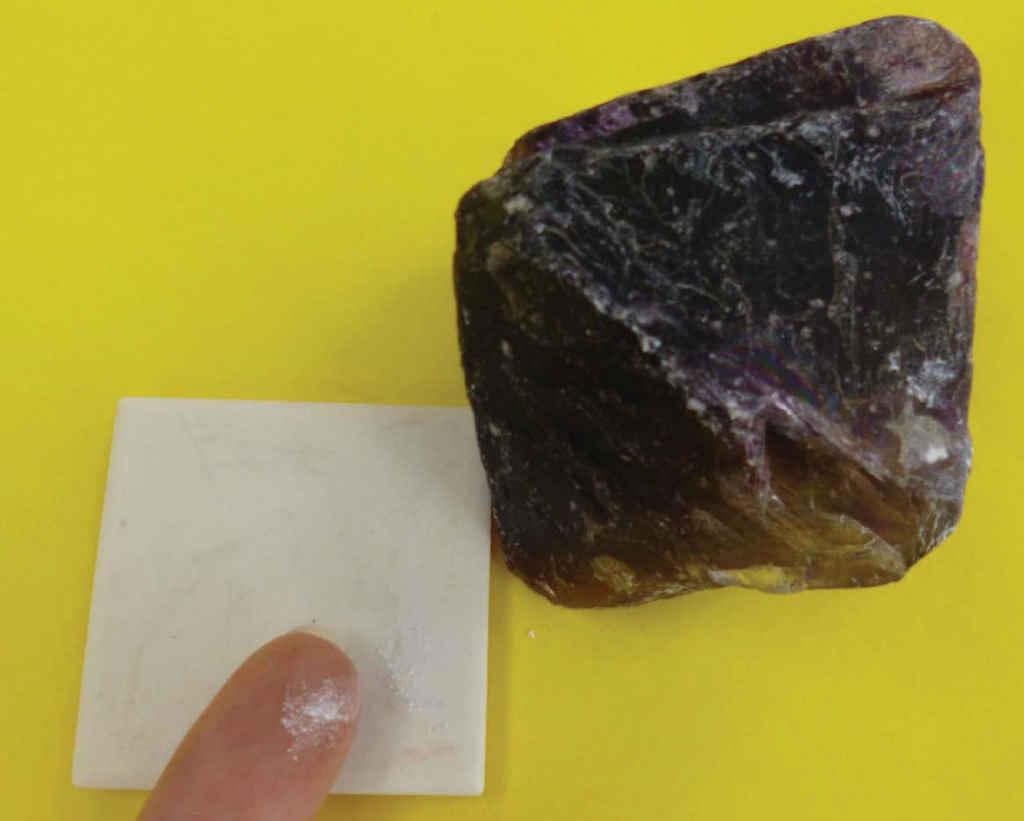
Source: Randa Harris (2015) CC BY-SA 3.0 view source
2.2.7 Special Physical Properties
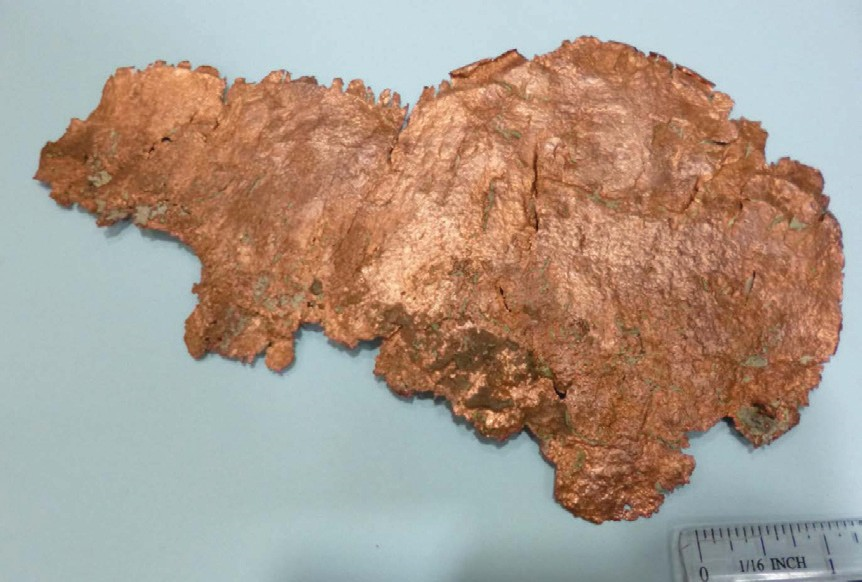
Source: Randa Harris (2015) CC BY-SA 3.0 view source
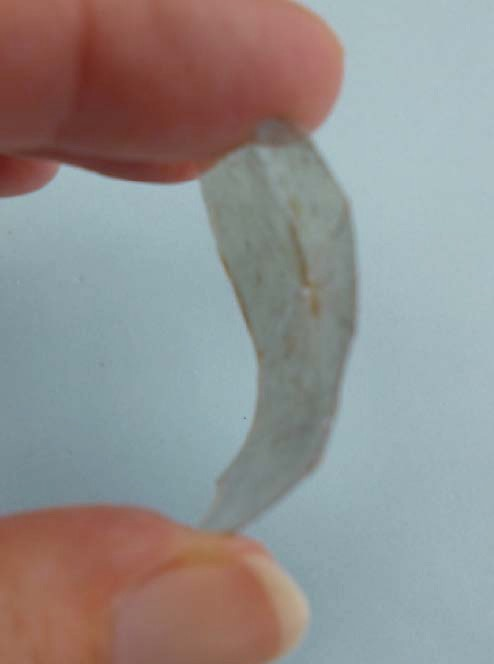
Source: Randa Harris (2015) CC BY-SA 3.0 view source
Some minerals react when dilute hydrochloric acid is placed on them. Carbonate minerals (minerals that include CO3 in their chemical formula) will effervesce or fizz when acid is applied to them. When you test a mineral with acid, be cautious and use just a drop of the acid. Use your magnifying glass to look closely for bubbles (e.g., Figure 2.18). The acid is very dilute and will not burn your skin or clothing, but wash your hands after use. Also make sure that you rinse with water and wipe off the acid from the minerals that you test.
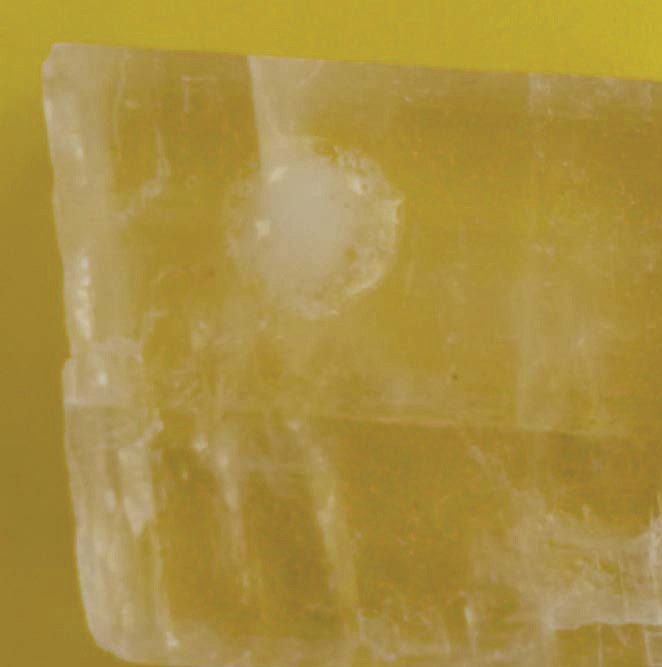
Source: Randa Harris (2015) CC BY-SA 3.0 view source
Minerals may be magnetic, and this property is simply tested by seeing if your nail is attracted to a mineral. Magnetite is an example of a magnetic mineral. The mineral halite is simply table salt, so it will taste salty. Sphalerite will release a sulfurous smell when streaked, and talc will feel soapy when touched.
Specific gravity is the ratio of a mineral’s weight to the weight of an equal volume of water. A mineral with a specific gravity of 2 would weigh twice as much as water. Most minerals are heavier than water, and the average specific gravity for all minerals is approximately 2.7. Some minerals are quite heavy, such as pyrite with a specific gravity of 4.9-5.2, native copper, with a specific gravity of 8.8-9.0, and native gold at 19.3, which makes panning useful for gold, as the heavy mineral stays behind as you wash material out of the pan.

